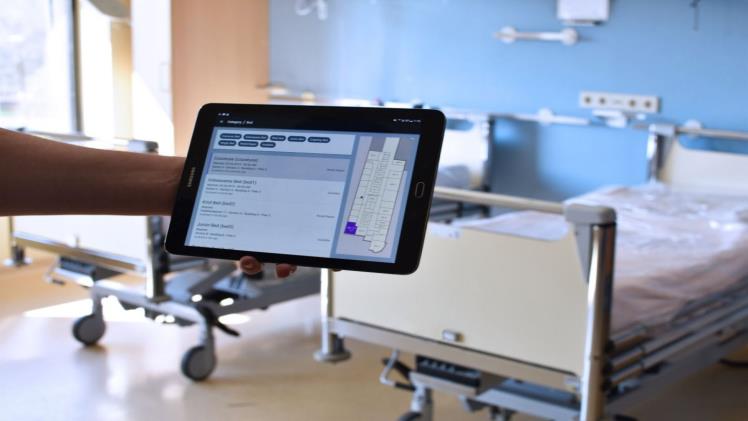Access to up-to-date bed vacancy data is crucial for triage, emergency coordinators and ambulance crews who need to transfer patients to the nearest hospital. Information about available beds is also essential for hospitals, as it affects their financial performance and the quality of services provided. Let’s check if real-time bed management systems based on BLE technology improve healthcare operations.
Bed management system – why is it so needed?
Eliminating bottlenecks is essential in the efficient operation of hospitals. This problem is defined by Patrice Spath, an adjunct professor at the University of Alabama at Birmingham: “A bottleneck is the part of the patient care journey that cannot meet the demand for services efficiently. At this point, services are delayed, and patient care must wait.”
One such bottleneck is the availability of beds and the management of its monitoring process. Hospitals that don’t have real-time visibility into the number of available beds in each department can’t manage their facilities effectively, and worse, put patients’ health at risk by delaying the process of finding and preparing a new bed. This lack of near-real time visibility into bed availability results in patients having to wait for available beds or being unnecessarily transported to facilities that do not have space for them.
Lack of insights about bed availability in hospitals also results in the cancellation of scheduled surgeries. This is a problem for patients who require the surgeon’s help and for staff who have downtime.
It is also worth mentioning that hospitals are facing a problem in the form of bed theft. In 2019, Florida VA Hospitals reported nearly $5 million in missing medical equipment. These loses could be mitigated through the ability to easily track their locations and use patterns.
All of this, in turn, translates into profitability issues for medical facilities – fewer beds, fewer patients, fewer funds raised, less profit. That’s why it’s so important to monitor the status of beds. What technologies support this process?
How does a hospital bed management system based on BLE technology work?
A BLE-based management system provides users with real-time information about the location of even a single bed. The solution is user-friendly and requires almost no technical expertise. In case when you already have a Wifi network, especially a BLE-enabled WiFi network, it simply involves attaching a Bluetooth tag to each bed in the hospital, and setting up a software solution. Everything is done in four steps:
- Attaching a BLE tag to each hospital bed; e,g, Kontakt.io’s Asset Tag 2 that can last up to 8 years and has 2 various mounting options, it also is equipped with an IR received that allows for room-level accuracy in a combination with Portal Beams and Location Engine;
- Placing the bed in the appropriate department in the hospital;
- Plug & install additional gateways in each room if you require granular bed location accuracy
- Locating beds by ID number using a real-time search bar within an RTLS platform, e.g. Kontakt.io’s Smart Hospital Solutions
In addition to the location function itself, BLE-based bed monitoring systems can, for example, pinpoint where delays are most frequent and adjust staffing and procedures accordingly. It is also possible, for example, to schedule email notifications if x-amount of days pass without servicing the bed. Enhanced analytics is also an advantage of this type of system. A BLE-based electronic hospital beds monitoring system allows users to easily view bed data and identify inefficiencies. This results in increased productivity and efficiency. If you are looking for an RTLS solution for bed tracking, patient workflows, occupancy tracking and more, reach out to Kontakt.io today www.kontakt.io

